- News
- Reviews
- Bikes
- Components
- Bar tape & grips
- Bottom brackets
- Brake & gear cables
- Brake & STI levers
- Brake pads & spares
- Brakes
- Cassettes & freewheels
- Chains
- Chainsets & chainrings
- Derailleurs - front
- Derailleurs - rear
- Forks
- Gear levers & shifters
- Groupsets
- Handlebars & extensions
- Headsets
- Hubs
- Inner tubes
- Pedals
- Quick releases & skewers
- Saddles
- Seatposts
- Stems
- Wheels
- Tyres
- Tubeless valves
- Accessories
- Accessories - misc
- Computer mounts
- Bags
- Bar ends
- Bike bags & cases
- Bottle cages
- Bottles
- Cameras
- Car racks
- Child seats
- Computers
- Glasses
- GPS units
- Helmets
- Lights - front
- Lights - rear
- Lights - sets
- Locks
- Mirrors
- Mudguards
- Racks
- Pumps & CO2 inflators
- Puncture kits
- Reflectives
- Smart watches
- Stands and racks
- Trailers
- Clothing
- Health, fitness and nutrition
- Tools and workshop
- Miscellaneous
- Buyers Guides
- Features
- Forum
- Recommends
- Podcast
feature
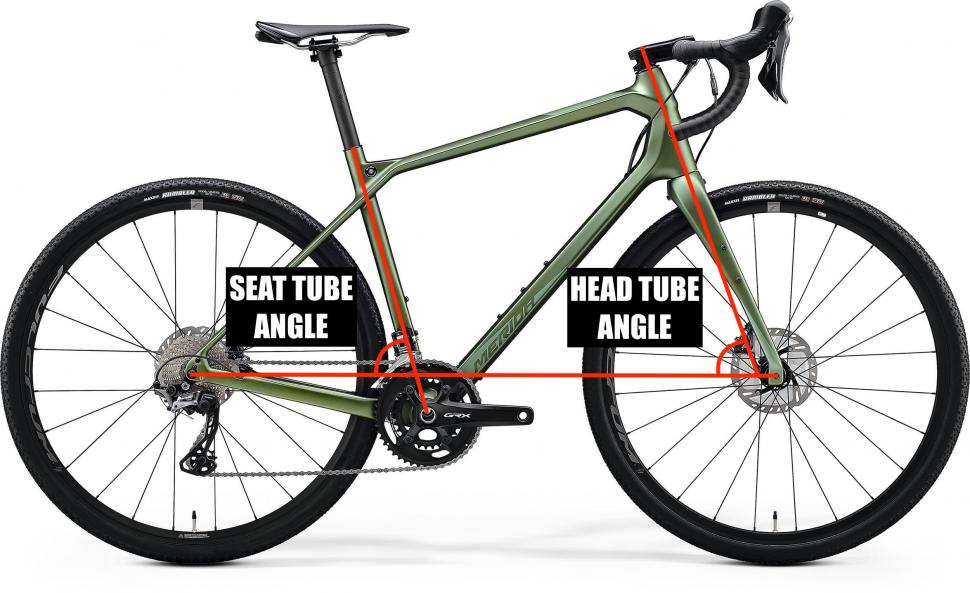 Head tube and Seat tube angle.jpg
Head tube and Seat tube angle.jpgBike geometry 101: Learn why frame angles & trail matter
If you ever read reviews or scour brands' websites looking at new bikes you'll have come across references to frame angles and trail, but what difference do they make to a particular model's character and behaviour?
Here's how to make sense of them...
Seat tube angle
A bike's seat tube angle – often called 'seat angle' – is simply the angle between the horizontal and a line that starts at the bottom bracket and goes up through the seat tube.
Like stack and reach, seat tube angle refers solely to the frame. It doesn't take into account a seatpost's layback (the position of the clamp in relation to the centre of the seatpost) or whether the saddle is pushed forward or backward on its rails. These factors, along with the amount of seatpost extending out of the frame, mean that saddle position can differ significantly between bikes with exactly the same seat tube angle.
What are stack and reach and why are they important?
The seat tube angle influences but does not define saddle setback, which is the horizontal distance between the front of the saddle and the centre of the bottom bracket.
Stack and reach don't take seat tube angle into account, which is one of the reasons why we cautioned that these measurements, although useful, don't give the whole story. Stack and reach tell you about the position of the top of the head tube in relation to the bottom bracket (Canyon has also introduced stack + and reach + which we cover in our feature on stack and reach; these measurements are very different). Two bikes could have identical stack and reach measurements but fit quite differently because of different seat tube angles.
All other things being equal, a steeper seat tube angle moves the saddle forwards – putting you more directly over the bottom bracket – and a shallower seat tube angle moves it back, shifting more of your weight from the handlebar to the saddle.
Giant's Contend is fairly typical of road bikes in having seat tube angles of 72.5° to 74°, depending on the frame size.
Most of Specialized's Tarmac frames have seat tube angles from 73° to 74°, although the very small 44cm model has an unusually steep seat tube angle of 76° which moves the saddle closer to the handlebar for less of a stretch.
A steep seat tube angle allows racers (and anyone else who wants to ride fast) to achieve a flat-backed position for aerodynamic efficiency with a more open hip angle than would otherwise be the case. Too tight a hip angle can be uncomfortable and restrict both breathing and power.
Time trial and triathlon bikes tend to have very steep seat tube angles for similar reasons. Canyon's Speedmax, for instance, has a seat tube angle of 80.5° across all sizes, and a seatpost with an adjustable clamp that allows you to push the saddle even further forward.
Head tube angle
Head tube angle – often shortened to 'head angle' – is measured from the horizontal to a line running down the centre of the fork steerer tube.
Mountain bikes with front suspension usually have head tube angles in the 62-73° range while road bike head tube angles tend to be above 70°, commonly between 72° and 74°.
All other things being equal, a slacker head tube angle (a smaller number) will move the front wheel further forward and lengthen the wheelbase (the horizontal distance between the front and rear hubs) and the front-centre (the horizontal distance from the centre of the bottom bracket to the front hub). The alternative is for a bike designer to fix the wheelbase at a set measurement and then a slacker head tube angle will shorten the top tube.
Smaller sized road bikes sometimes have slacker head tube angles in order to reduce the amount of wheel/toe overlap and avoid problems when steering.
At the risk of insulting your intelligence, the fact that the head tube is angled rather than perpendicular means that adding headset spacers moves your handlebar horizontally as well as vertically.
Say your road bike has a 73° head tube angle and you add 25mm of headset spacers. As well as lifting your handlebar vertically about 24mm, this will move it about 7mm horizontally towards the saddle.
Trail
Head tube angle also influences trail. This is the distance that the centre of the front tyre's contact patch trails behind the point where the bike's steering axis (the fork steerer tube) intersects with the ground. It sounds more complicated than it is!
Trail is a function of the head tube angle, fork offset/rake (the distance the front hub is offset from the steering axis) and wheel/tyre size. Steepening the head tube angle decreases trail, all other things being equal, as does increasing the fork offset and decreasing the wheel/tyre size.
Many bike brands list trail (but not mechanical trail – the perpendicular distance between the steering axis and the front tyre's contact patch – which would be more informative).
As a rule, more trail results in more stable steering and a greater ability to hold a line on rougher terrain.
Less trail makes for a bike that steers more sharply, but too little can result in a twitchy feel.
Let's look at examples from a couple of brands...
Trek's Madone road race bike (we'll talk about a 56cm size here) has a head tube angle of 73.5°. This, along with a 40mm fork offset (and the wheel/tyre size) results in a trail of 58mm.
In contrast, Trek's Boone cyclocross bike has a slacker head tube angle of 72°, a 45mm fork offset and a much higher trail of 67mm.
The idea is that the Madone offers the quick, agile steering required in road racing while the Boone's higher trail will help keep the steering straighter on the rough terrain you'll encounter when riding cyclocross.
The Domane, the endurance road bike in Trek's range, has a slack head tube angle too – 71.9° – a 48mm fork offset and 61mm of trail. It is designed to offer more stability than the Madone.
Trek's Checkpoint gravel bike – designed for surfaces that are rougher than tarmac but not as extreme as you find in cyclocross – has a 72.2° head tube angle, a 49mm fork offset and a 61mm trail, each figure sitting between those of the Madone road bike and the Boone cyclocross bike.
It's a similar story over at Giant. The TCR Advanced road race bike (we'll go with ML sizing for Giant) has a 73° head tube angle, a 45mm fork offset and 57mm of trail.
The TCX SLR cyclocross bike has a slacker head tube angle – 72° – a greater fork offset – 50mm – and 62mm of trail to provide off-road stability.
The Defy Advanced endurance road bike sits between the two with a 72.5° head tube angle, 50mm of fork offset (the same as the TCX) and 58mm of trail.
Giant goes with a very slack 71° head tube angle on its Revolt gravel bike, 50mm of fork offset and a whopping (for a bike of this type) 71.6mm of trail.
It's worth pointing out again that bike designers sometimes have to increase trail on smaller bikes to prevent toe overlap with the front wheel. The 44cm version of Specialized's Tarmac road bike, for example, has 71mm of trail compared with 55mm on the 56cm model.
Limitations
Head tube angle and trail alone don't determine how a bike steers. There are many other factors involved, including stem length, handlebar type/dimensions, wheelbase, your weight distribution and the tyres used (particularly important at the moment with brands speccing ever larger tyres on road frames). We'll cover these in future features. Head tube angle and trail are helpful, though, in giving you an indication of a bike's character and how it is likely to handle.
Thanks to Dom Mason of Mason Progressive Cycles for giving this feature a quick once-over prior to publication. Any errors are road.cc's own.
Mat has been in cycling media since 1996, on titles including BikeRadar, Total Bike, Total Mountain Bike, What Mountain Bike and Mountain Biking UK, and he has been editor of 220 Triathlon and Cycling Plus. Mat has been road.cc technical editor for over a decade, testing bikes, fettling the latest kit, and trying out the most up-to-the-minute clothing. He has won his category in Ironman UK 70.3 and finished on the podium in both marathons he has run. Mat is a Cambridge graduate who did a post-grad in magazine journalism, and he is a winner of the Cycling Media Award for Specialist Online Writer. Now over 50, he's riding road and gravel bikes most days for fun and fitness rather than training for competitions.
Latest Comments
- chrisonabike 1 sec ago
Just as long as they're not "armed response"-I've...
- chrisonabike 7 min 28 sec ago
Ah, but refuse trucks / fire engines / ambulances ... oh and the single disability- adapted vehicle on the block (like in the Bristol LTN case)....
- Bigtwin 17 min 16 sec ago
How the actual F can you NOT go to prision for drinking vodka WHILE DRIVING A CAR!!??
- Bigtwin 22 min 40 sec ago
I wouldn't be meeting that Orange Pillock anywhere, let alone 1/2 way.
- Laz 38 min 23 sec ago
If the local police is unwilling or unable to do their job properly, then perhaps her insurance provider ought to re-evaluate the risks she poses...
- No Skinny Tyres 2 hours 17 min ago
It's a stabiliser, it was first used in WW2 to preserve chocolate in US rations. It allows the milk solids to fully dissolve, US chocolate is less...
- Martin1857 11 hours 32 min ago
As a member of the Co-op community (I live in a Housing Co-op) and a bike owner /rider, this is very sad news. We need more Co-ops not less.
- Dnnnnnn 11 hours 23 min ago
It is sad for the individuals concerned but (and this is a general point, rather than specific to this story), we're much better off overall for...
- No Reply 12 hours 14 min ago
I agree with Pogacar regarding social media. The likes of Facebook, Instagram have done untold damage, especially to the minds of young people....
- David9694 12 hours 19 min ago
Lorry carrying 25 tonnes of beer catches fire on the M11...


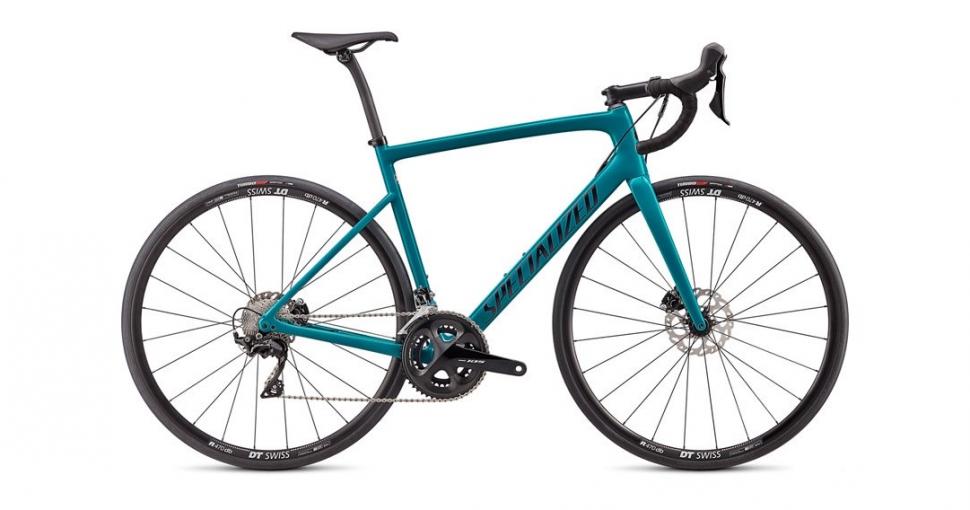

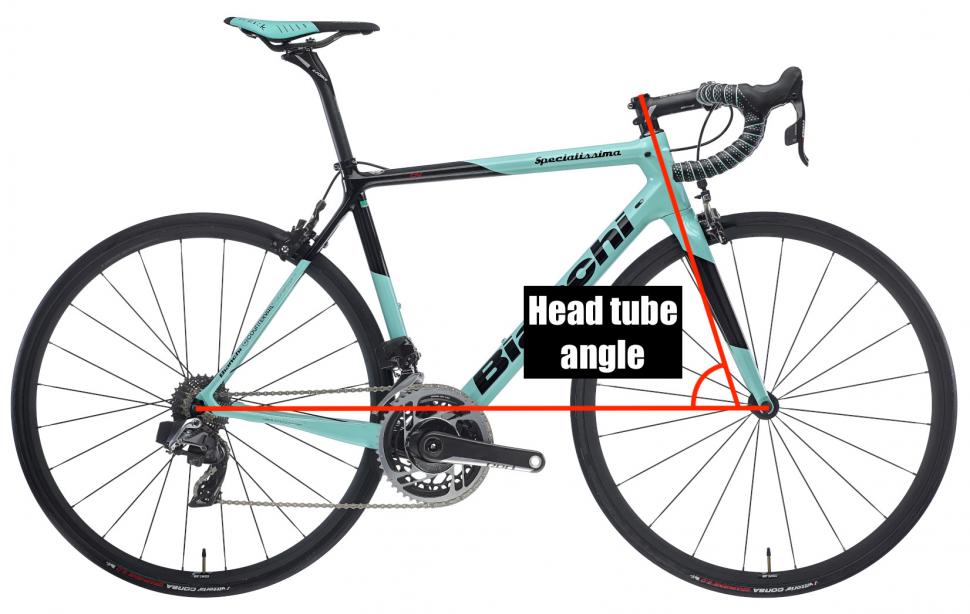
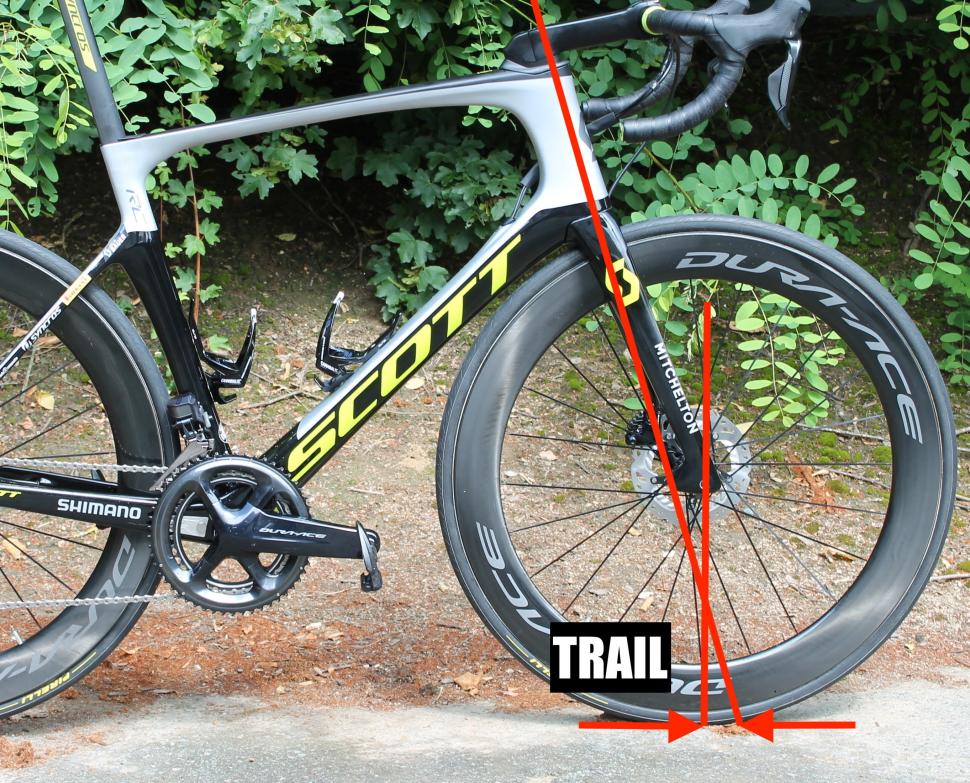


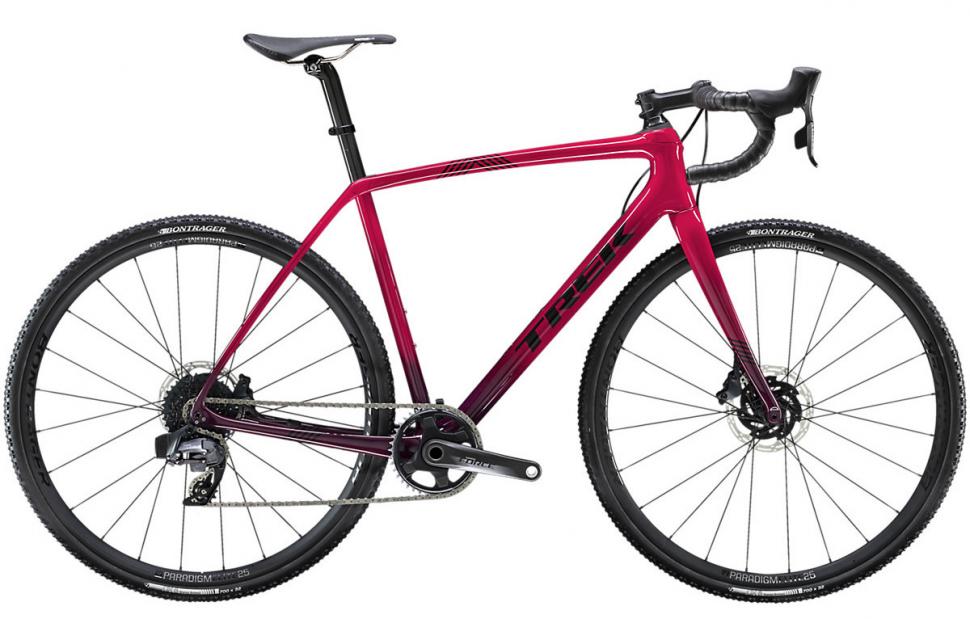
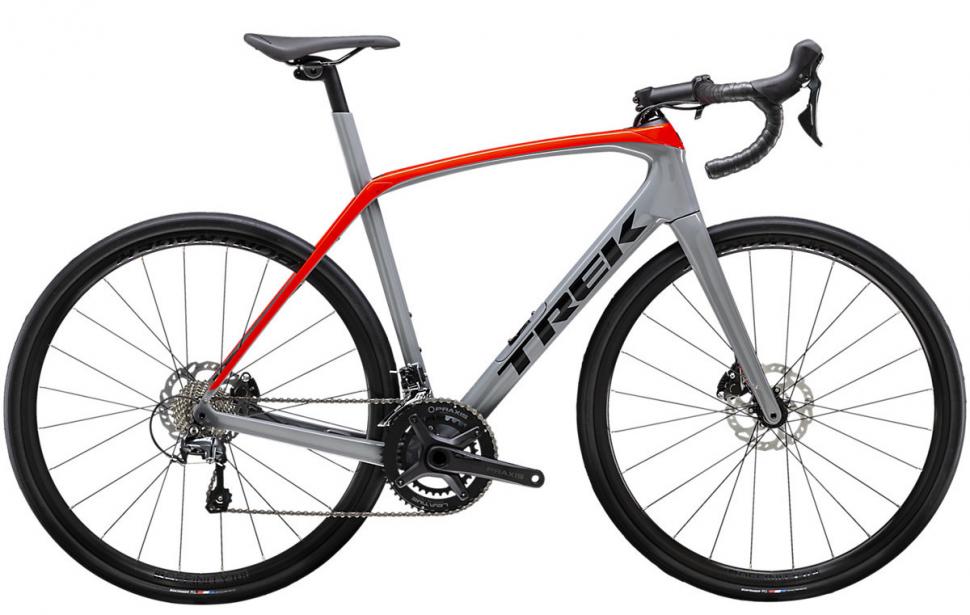
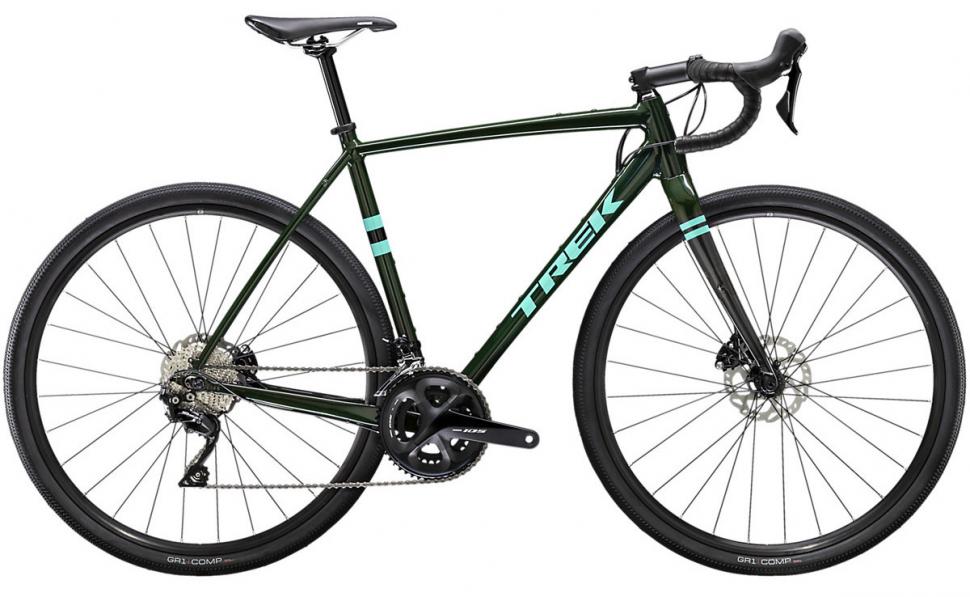




Add new comment
5 comments
Giant TCR has (according to them) got a trail figure of 59.2, not 57. Why the difference?
Let me know if I'm understanding...In your Trail section it notes "Steepening the head tube angle decreases trail," This means "increased offset" I believe, which helps with climbing, as it brings the wheel closer to the rider putting more weight on the front wheel; but it will feel twitchy at high speed if going downhill....and the opposite should be true, increasing the trail (or less offset) is for stability moving the wheel further away from the rider slackening the bike, which increases trail for stability going down at speed; yet it may not turn as good at slow speed or climb as good as steeper angled setups.
I misunderstood at first, but great read!
Imagine the extremes, (assuming your forks are in line with your steering axis) if you have a vertical steering axis there will be no trail as the contact patch will be directly below the steering axis, conversely if you have a horizontal steering axis then trail will be infinite as the steering axis will never touch the ground. So from this a steeper head angle will give less trail.
Some addenda:
Small frames sometimes need to have steep seat tube angles because otherwise the frame wouldn't clear the rear wheel.
And more fork offset creates a longer front center, a longer wheelbase and less trail at a given head tube angle.
And when evaluating trail numbers you should always take into account the type of bike concerned.
Nice feature road.cc - more of this sort of thing! (and the simpler the explanation, the better, with more detailled explanations for those that want it underneath)